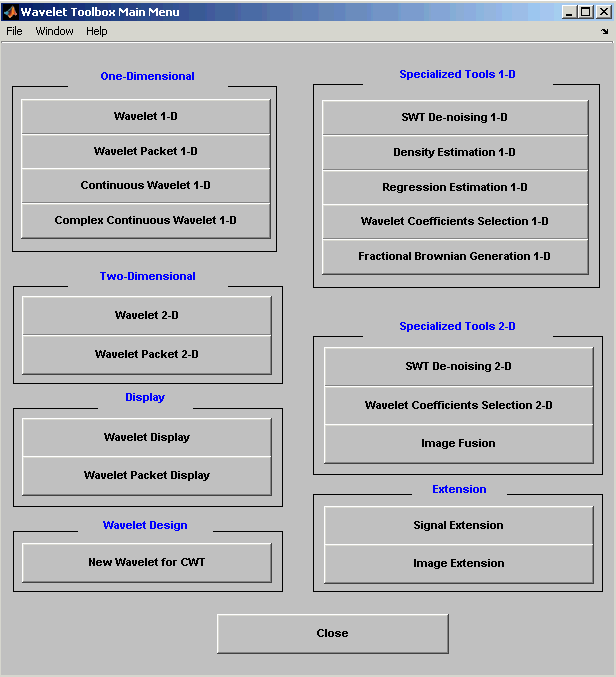

| Wavelet Toolbox |   |
One-Dimensional Estimation Using the Graphical Interface
The Wavelet Toolbox Main Menu appears.

Click the Density Estimation 1-D menu item. The discrete wavelet analysis tool for one-dimensional density estimation appears.
 Data for Density Estimate option.
Data for Density Estimate option.
When the Load data for Density Estimate dialog box appears, select the demo MAT-file ex1cusp1.mat, which should reside in the MATLAB directory toolbox/wavelet/wavedemo. Click the OK button. The noisy cusp data is loaded into the Density Estimation 1-D tool.
The sample, a 64-bin histogram, and the processed data obtained after a binning are displayed. In this example, we'll accept the default value for the number of bins (250). The binned data, suitably normalized, will be processed by wavelet decomposition.
sym6 wavelet from the Wavelet menu and select 4 from the Level menu, and then click the Decompose button. After a pause for computation, the tool displays the detail coefficients of the decomposition of the binned data.
Continue by clicking the Estimate button.
You can see that the estimation process delivers a very irregular resulting density. The density estimate (in yellow) is the normalized sum of the signals located below it: the approximation a4 and the reconstructed details after coefficient thresholding.
From the menu Select thresholding method, select the item By level threshold 2. For more information about these methods, see Function Estimation: Density and Regression. Next, click the Estimate button.
The estimated density is more satisfactory. It correctly identifies the smooth part of the density and the cusp at 0.7.
 | One-Dimensional Wavelet Density Estimation | Importing and Exporting Information from the Graphical Interface |  |
© 1994-2005 The MathWorks, Inc.